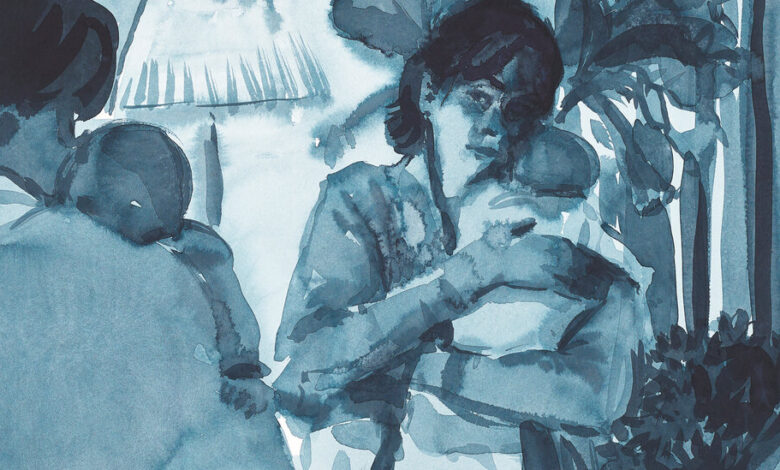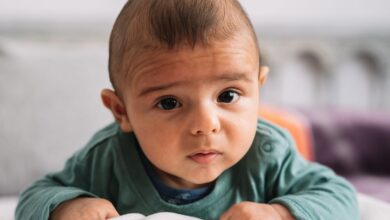When Women Artists Choose Mothering Over Making Work

It’s as if there were only one way to be an artist and only one way to be a mother: all in. During an interview with the German newspaper Tagesspeigel in 2016, the Serbian performance artist Marina Abramović, when asked if she ever wanted children, explained that she had had three abortions: “One only has limited energy in the body, and I would have had to divide it.” The British artist and former enfant terrible Tracey Emin, whose show “Lovers Grave” runs through January at the White Cube gallery in New York, told Red magazine in 2014 that she chose to remain childless because “I would have been either 100 percent mother or 100 percent artist. I’m not flaky and I don’t compromise.” Eighty-five years after Connolly’s axiom, and more than 60 years after Butler’s lecture, women artists are still grappling with an essentialist argument. “There are good artists that have children,” Emin said to Red, matching Connolly with her own knife thrust. “They are called men.” The intimation is that, to succeed as an artist, a woman must deny or defeat the mother within.
IN 2001, WHEN the British Canadian writer Rachel Cusk published “A Life’s Work: On Becoming a Mother,” her visceral chronicle of early motherhood (or “prison diary,” as the American critic Judith Thurman described it in The New Yorker), she was excoriated in the press, to the point of being called the “most hated” writer in England. (She now lives in Paris.) Readers likewise rushed to judgment in 2005 when the American writer Ayelet Waldman declared in The New York Times that she loved her husband more than her children. But of late it has become more acceptable, even mainstream, to express ambivalence and fury. By the time the California-based writer Minna Dubin’s Times essay on maternal martyrdom went viral in 2019 — leading to a book, “Mom Rage: The Everyday Crisis of Modern Motherhood,” released in September — it was merely the latest entry in a recognized and applauded genre.
Most of the literature on artists as mothers has focused on women who try to be both at once, a struggle chronicled recently and rigorously by the American biographer Julie Phillips in “The Baby on the Fire Escape: Creativity, Motherhood and the Mind-Baby Problem” (2022) — many of whose subjects, including the painter Alice Neel and the writers Susan Sontag and Audre Lorde, had unplanned pregnancies, owing to a lack or failure of birth control, and frightening, illegal and painful abortions. Then there’s the British art critic Hettie Judah’s “How Not to Exclude Artist Mothers (and Other Parents)” (2022), in which she notes, “This story — of brilliant talents quashed by domestic cares — might be repeated endlessly.” More rarely do we hear of women like Smith, who choose to take a pause from their creative work when they became mothers. This may be because any discussion of a particular choice runs the risk of being mistaken for an endorsement and thus, implicitly, a condemnation of other choices. Yet surely to think of artist-mothers as only suffering or silenced simply reinforces self-sacrifice as the measure of motherhood.
The Canadian American actress Meg Tilly took no roles between 1995 and 2010, and has said that she wanted to focus on raising her children — and that this wasn’t a loss. The Swedish British singer Neneh Cherry released her third solo album, “Man,” in 1996, the same year that her third child was born, then waited 18 years to release another. What should we label that period of time: hiatus, sabbatical? “Unless there’s some sort of product to show for it, it’s as though the life doesn’t exist,” Cherry told The Guardian in 2014. This returns us to the concept of vocation, which the American theologian Gilbert Meilaender has cautioned “may reinforce the dubious idea that the human being is essentially and primarily a worker.” Perhaps there’s something radical in choosing — if, that is, you have the financial stability to do so — to be primarily a mother for a period of time. It means setting aside art as a mode of production, while allowing the possibility of it in other forms.
In the 2016 essay collection “Little Labors,” the Canadian American writer Rivka Galchen muses of early motherhood, “The world seemed ludicrously, suspiciously, adverbially sodden with meaning.” In this way, her newborn makes her “more like a writer … precisely as she was making me into someone who was, enduringly, not writing.” The process of creation is not always visible to outsiders, nor does it always have tangible yields. When the American author Rachel Yoder’s son was born, she didn’t write for two years, then started what would become the novel “Nightbitch” (published in 2021 and adapted into a forthcoming film), in which the narrator, an artist ensconced at home caring for her young son, finds herself incapable of coming up with a coherent idea for a new project. Instead, she sprouts bristly hairs along the back of her neck; the metallic scent of blood in raw meat provokes in her a “depthless hunger.” She turns into a dog. Is this fable or performance art? In the physicality of mothering, Yoder finds a parallel to the making of art, in which your borders grow porous and there’s little to no separation between work and self.





